The PEER Approach
PEER Pearls Designed to Help You Retain the Important Details
We ask our authors to provide key takeaway pearls for each topic. We then transform that information into vibrant, meaningful visual summaries that you can use to brush up on key facts, as flash cards to study the most pertinent details, or as notes during the exam. We have created an entire library of these study aids and have organized them by key categories and presentations, and further by the clinical process of emergency medicine—diagnostic studies, diagnosis, management, procedures, and more. These images provide quick and easy references to vital information gleaned from practicing emergency physicians.
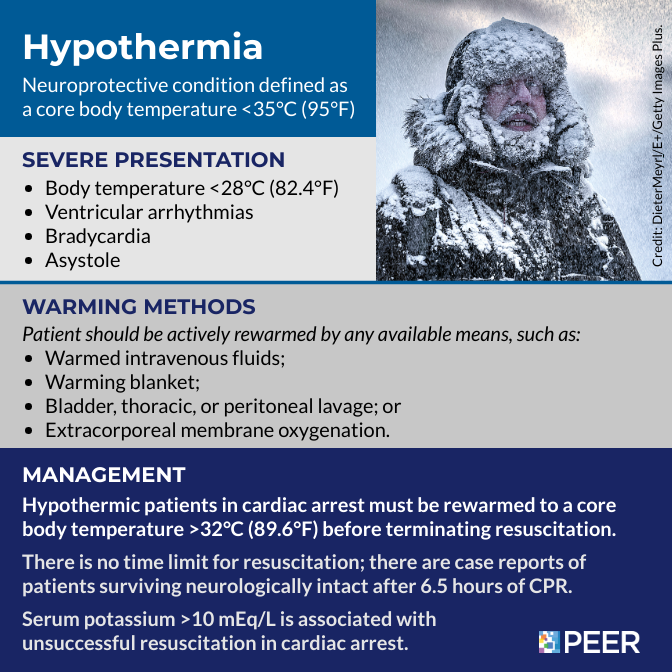 Hypothermia. Credit: Infographic: Frances Rudolf, MD; photo: DieterMeyrl/E+/Getty Images Plus.
Hypothermia. Credit: Infographic: Frances Rudolf, MD; photo: DieterMeyrl/E+/Getty Images Plus.
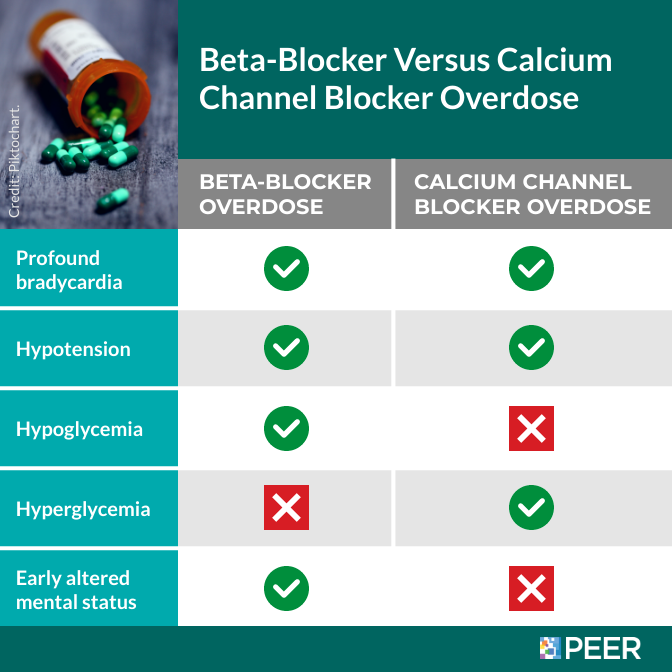 Beta-blocker versus calcium channel blocker overdose. Credit: Infographic: Justin Seltzer, MD; photo: Piktochart.
Beta-blocker versus calcium channel blocker overdose. Credit: Infographic: Justin Seltzer, MD; photo: Piktochart.
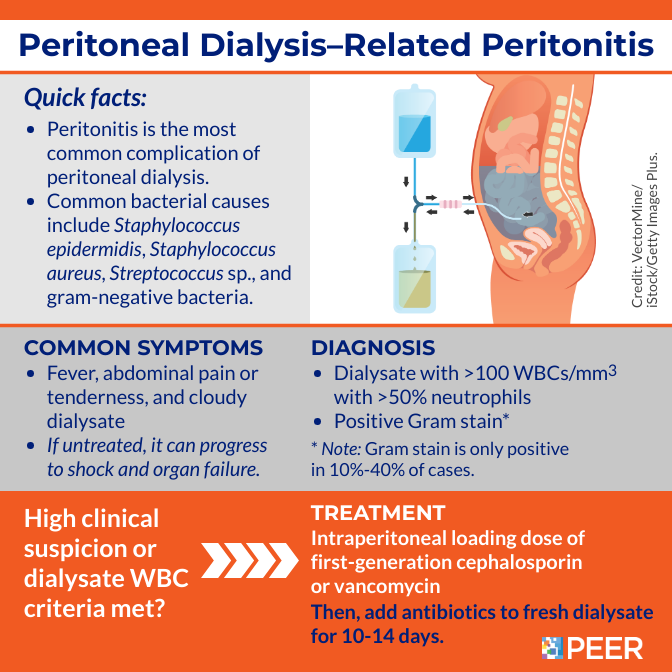 Common symptoms, diagnosis, and treatment for peritoneal dialysis–related peritonitis. Credit: Infographic: copyright ACEP; illustration: VectorMine/iStock/Getty Images Plus.
Common symptoms, diagnosis, and treatment for peritoneal dialysis–related peritonitis. Credit: Infographic: copyright ACEP; illustration: VectorMine/iStock/Getty Images Plus.
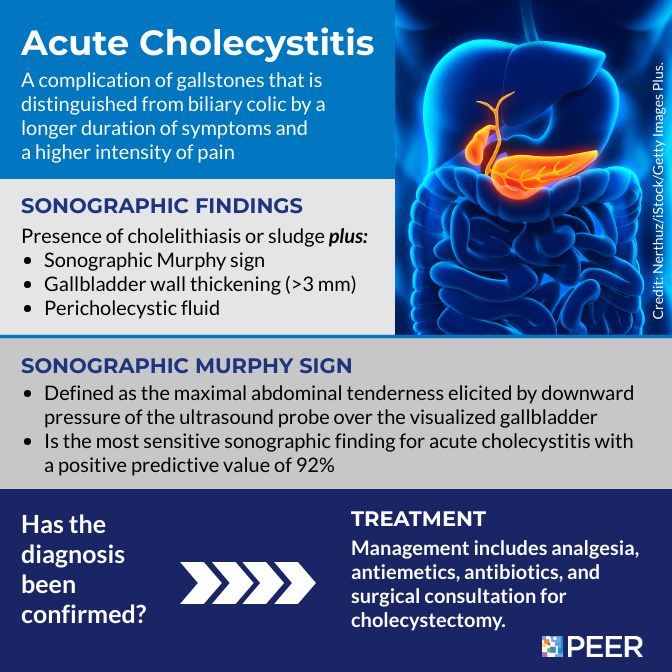 Acute cholecystitis. Credit: Infographic: copyright ACEP; illustration: Nerthuz/iStock/Getty Images Plus.
Acute cholecystitis. Credit: Infographic: copyright ACEP; illustration: Nerthuz/iStock/Getty Images Plus.
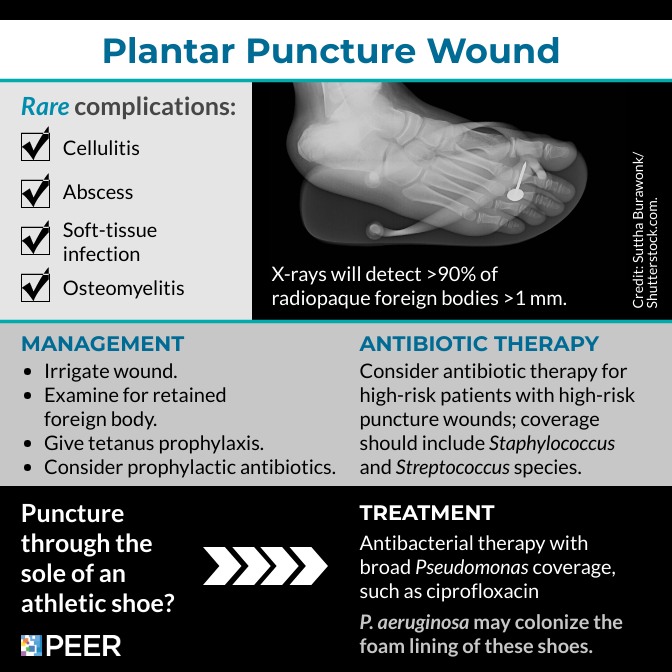 Puncture wounds. Credit: Infographic: Michael Ullo, MD; photo: Suttha Burawonk/Shutterstock.com.
Puncture wounds. Credit: Infographic: Michael Ullo, MD; photo: Suttha Burawonk/Shutterstock.com.
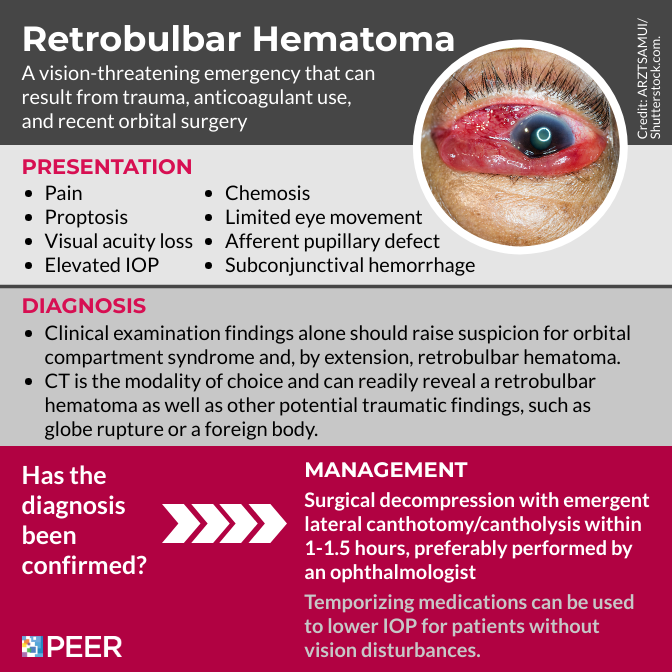 Retrobulbar hematoma. Credit: Infographic: Justin Seltzer, MD; photo: ARZTSAMUI/Shutterstock.com.
Retrobulbar hematoma. Credit: Infographic: Justin Seltzer, MD; photo: ARZTSAMUI/Shutterstock.com.
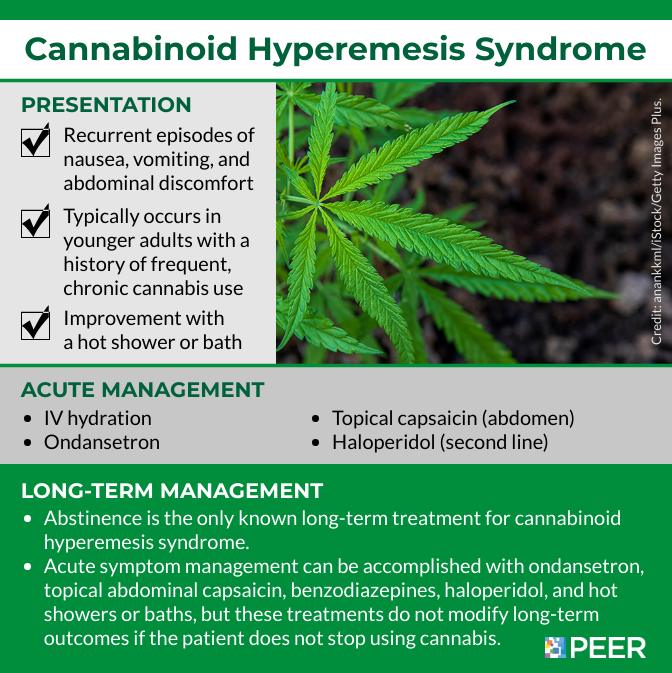 Cannabinoid hyperemesis syndrome. Credit: Infographic: Justin Seltzer, MD; photo: surakit sawangchit/iStock/Getty Images Plus.
Cannabinoid hyperemesis syndrome. Credit: Infographic: Justin Seltzer, MD; photo: surakit sawangchit/iStock/Getty Images Plus.
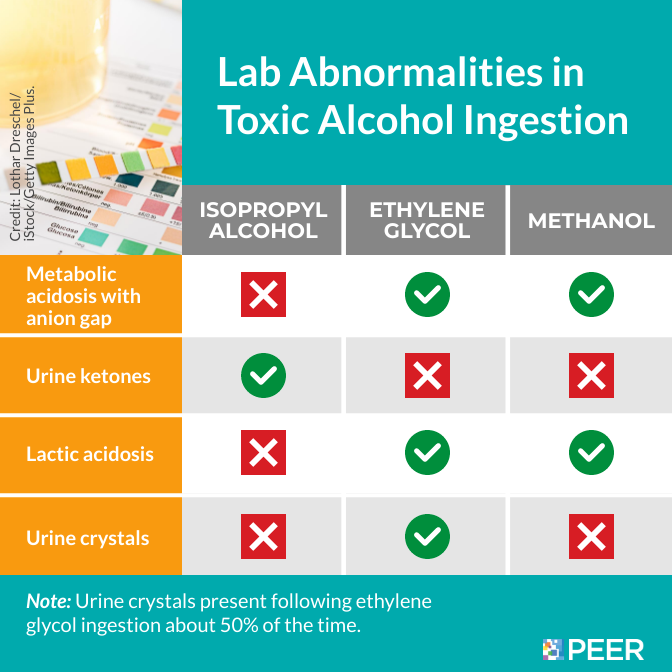 Lab abnormalities in toxic alcohol ingestion. Credit: Infographic: Heather Rozzi, MD, FACEP; photo: Lothar Dreschel/iStock/Getty Images Plus.
Lab abnormalities in toxic alcohol ingestion. Credit: Infographic: Heather Rozzi, MD, FACEP; photo: Lothar Dreschel/iStock/Getty Images Plus.
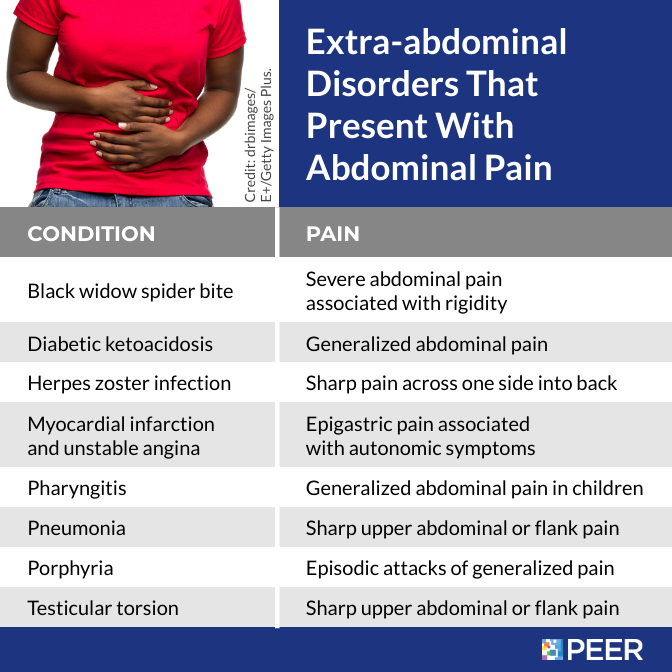 Extra-abdominal disorders that present with abdominal pain. Credit: Infographic: copyright ACEP; photo: drbimages/E+/Getty Images Plus.
Extra-abdominal disorders that present with abdominal pain. Credit: Infographic: copyright ACEP; photo: drbimages/E+/Getty Images Plus.
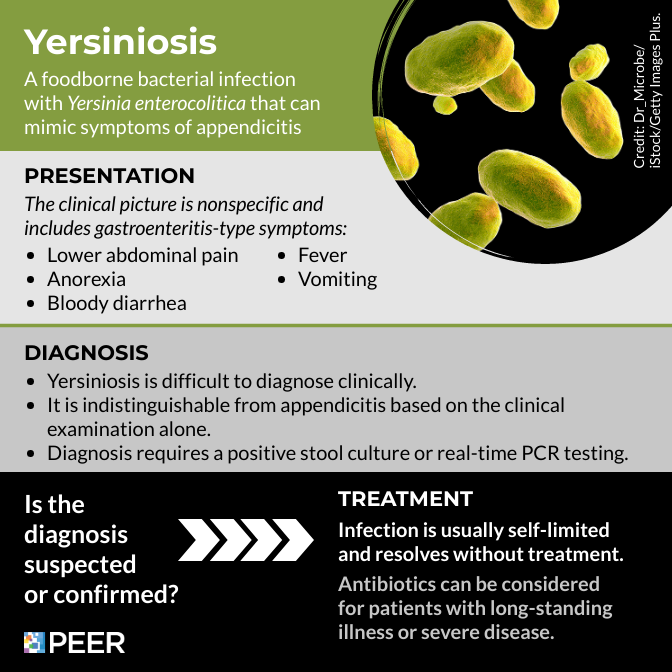 Yersiniosis. Credit: Infographic: copyright ACEP; illustration: Dr_Microbe/iStock/Getty Images Plus.
Yersiniosis. Credit: Infographic: copyright ACEP; illustration: Dr_Microbe/iStock/Getty Images Plus.
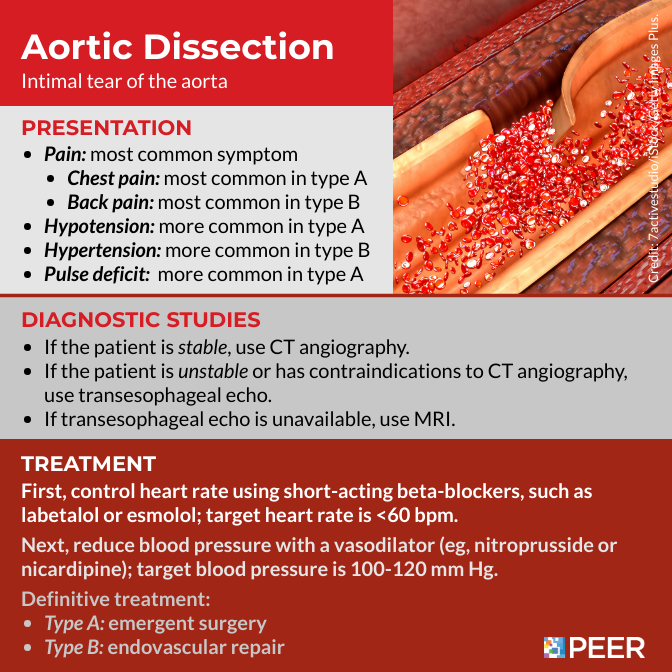 Aortic dissection. Credit: Infographic: Kasia Gore, MD; illustration: 7activestudio/iStock/Getty Images Plus.
Aortic dissection. Credit: Infographic: Kasia Gore, MD; illustration: 7activestudio/iStock/Getty Images Plus.
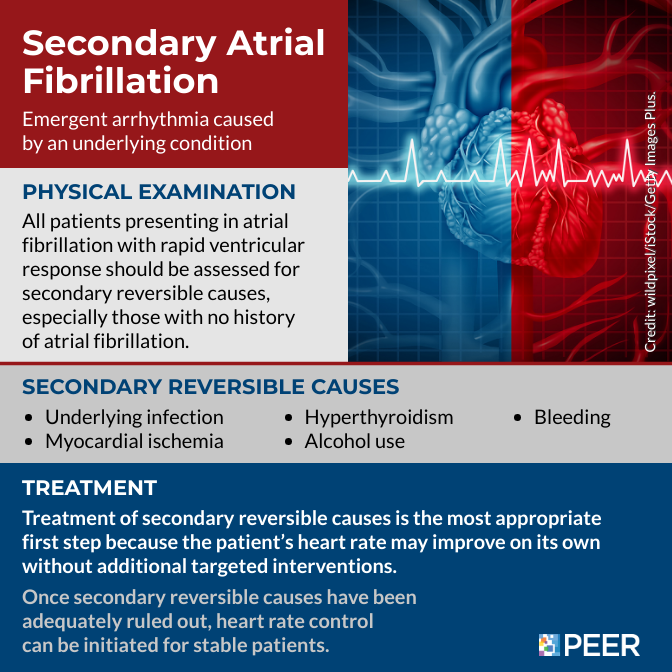 Secondary atrial fibrillation. Credit: Infographic: copyright ACEP; illustration: wildpixel/iStock/Getty Images Plus.
Secondary atrial fibrillation. Credit: Infographic: copyright ACEP; illustration: wildpixel/iStock/Getty Images Plus.
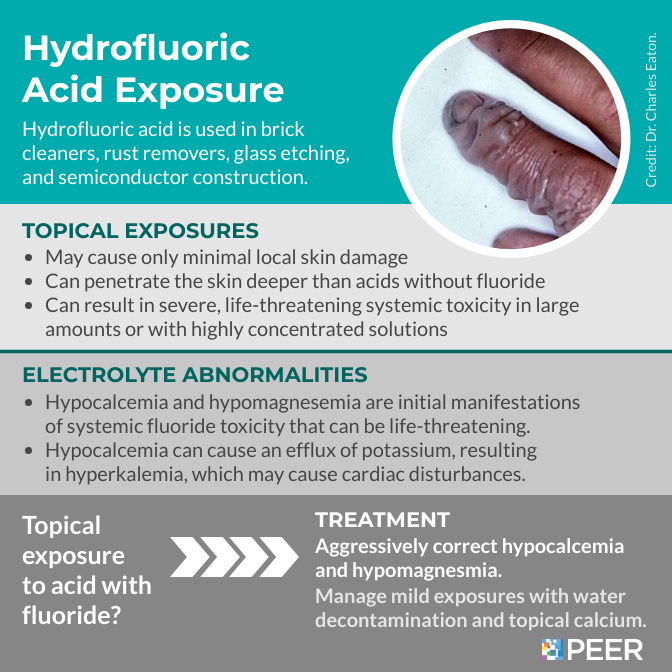 Hydrofluoric acid exposure. Credit: Infographic: copyright ACEP; photo: Dr. Charles Eaton.
Hydrofluoric acid exposure. Credit: Infographic: copyright ACEP; photo: Dr. Charles Eaton.
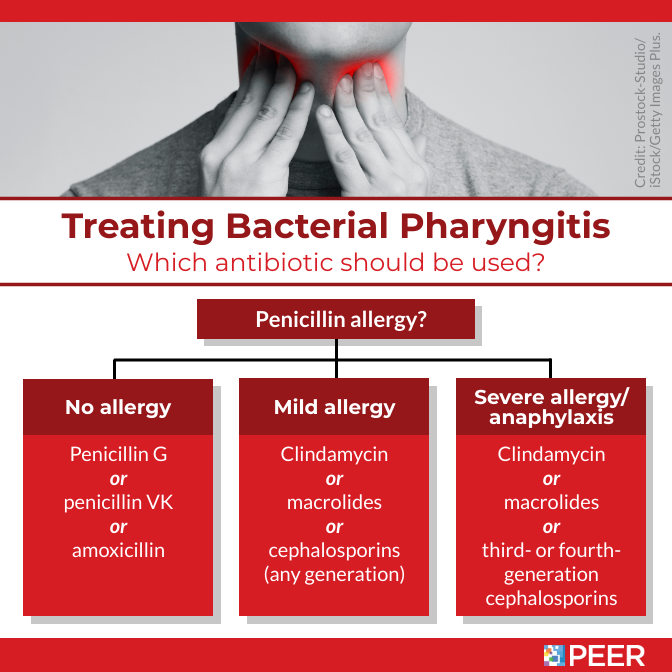 Treating bacterial pharyngitis. Credit: Infographic: Katia Johnston, MD; photo: Prostock-Studio/iStock/Getty Images Plus.
Treating bacterial pharyngitis. Credit: Infographic: Katia Johnston, MD; photo: Prostock-Studio/iStock/Getty Images Plus.
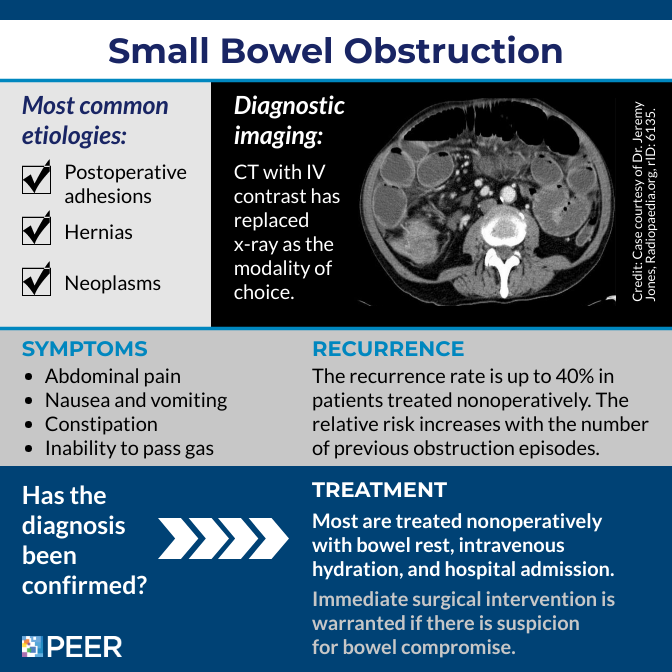 Small bowel obstruction. Credit: Infographic: Michael Ullo, MD; photo: Copyright 2020 Dr. Jeremy Jones. Image courtesy of Dr. Jeremy Jones and Radiopaedia.org, rID: 6135. Used under license.
Small bowel obstruction. Credit: Infographic: Michael Ullo, MD; photo: Copyright 2020 Dr. Jeremy Jones. Image courtesy of Dr. Jeremy Jones and Radiopaedia.org, rID: 6135. Used under license.
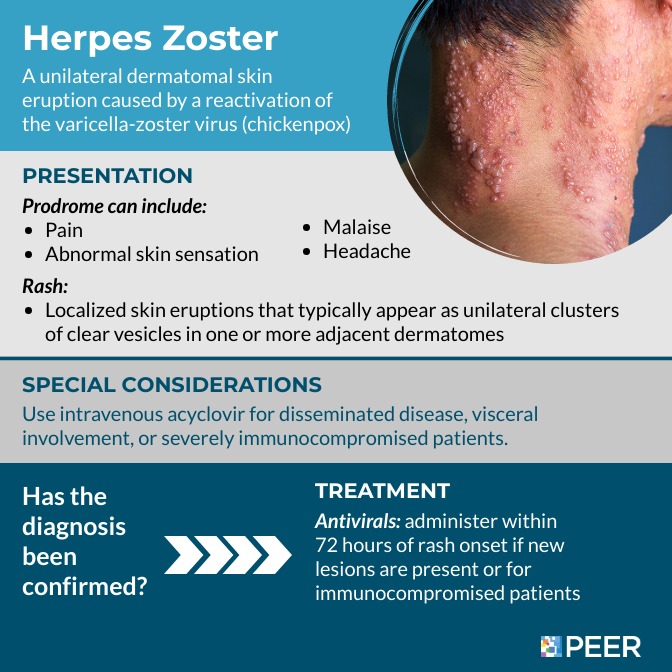 Herpes zoster. Credit: Infographic: Tina Choudhri, MD, FACEP; photo: Toey Toey/Shutterstock.com.
Herpes zoster. Credit: Infographic: Tina Choudhri, MD, FACEP; photo: Toey Toey/Shutterstock.com.
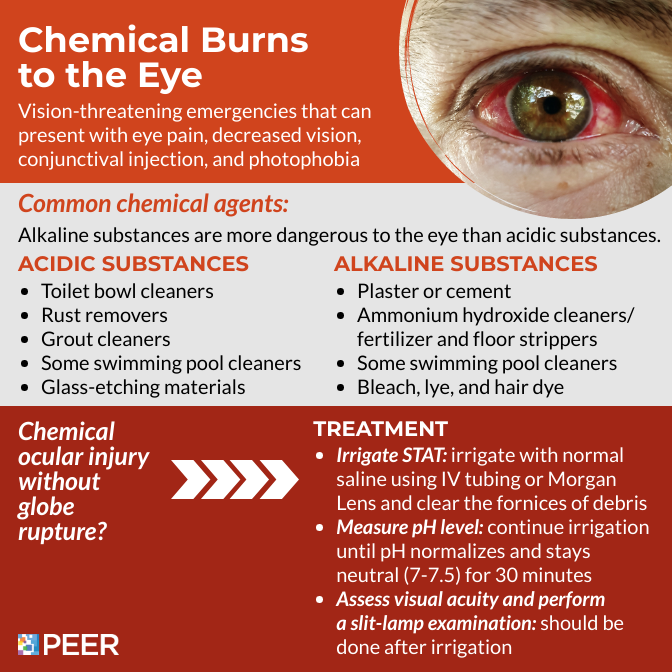 Chemical burns to the eye. Credit: Infographic: Megan Fix, MD, FACEP; photo: Chris worldwide/Shutterstock.com.
Chemical burns to the eye. Credit: Infographic: Megan Fix, MD, FACEP; photo: Chris worldwide/Shutterstock.com.
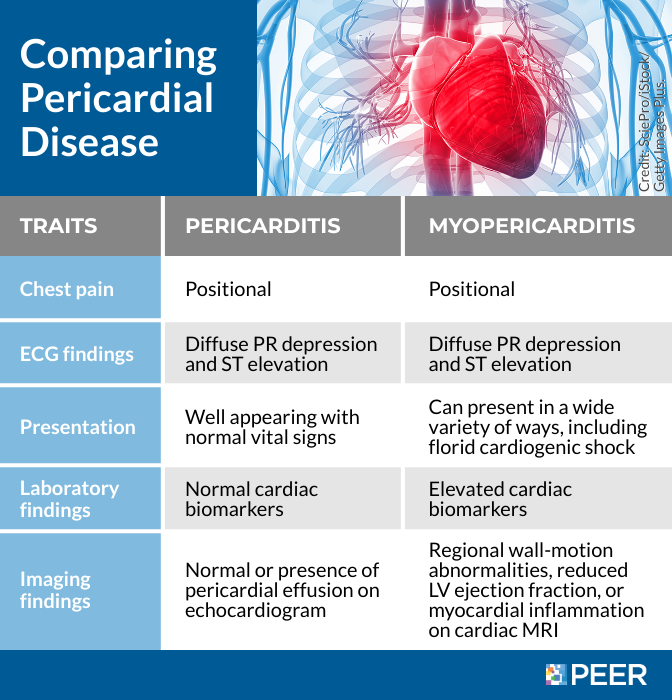 Comparing pericardial disease. Credit: Infographic: Justin Seltzer, MD; illustration: SciePro/iStock/Getty Images Plus.
Comparing pericardial disease. Credit: Infographic: Justin Seltzer, MD; illustration: SciePro/iStock/Getty Images Plus.
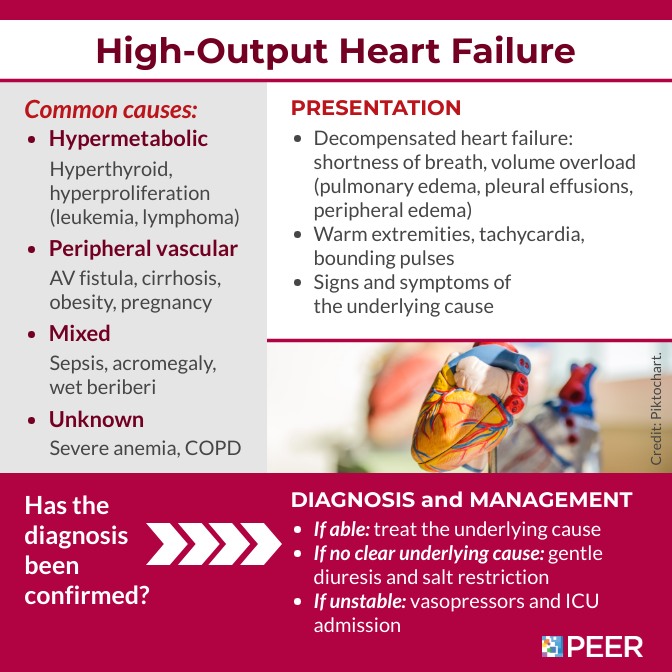 High-output heart failure. Credit: Infographic: Justin Seltzer, MD; photo: Piktochart.
High-output heart failure. Credit: Infographic: Justin Seltzer, MD; photo: Piktochart.
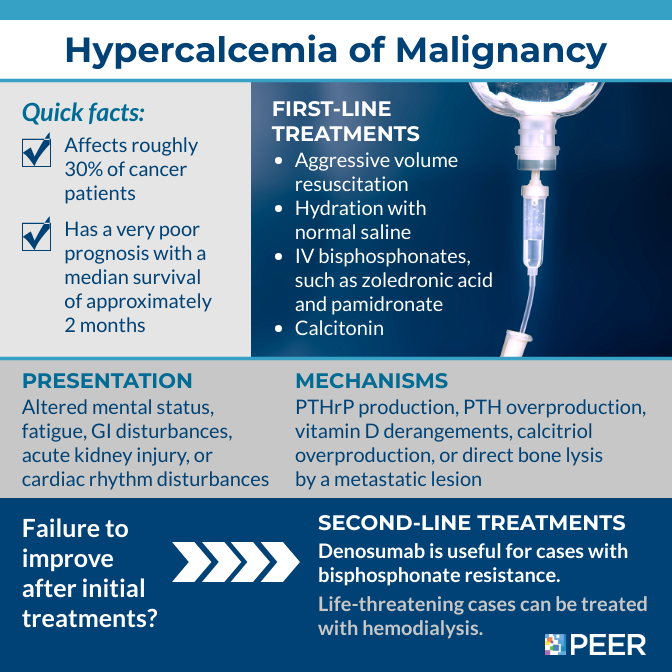 Hypercalcemia of malignancy. Credit: Infographic: Justin Seltzer, MD; photo: jes2ufoto/iStock/Getty Images Plus.
Hypercalcemia of malignancy. Credit: Infographic: Justin Seltzer, MD; photo: jes2ufoto/iStock/Getty Images Plus.
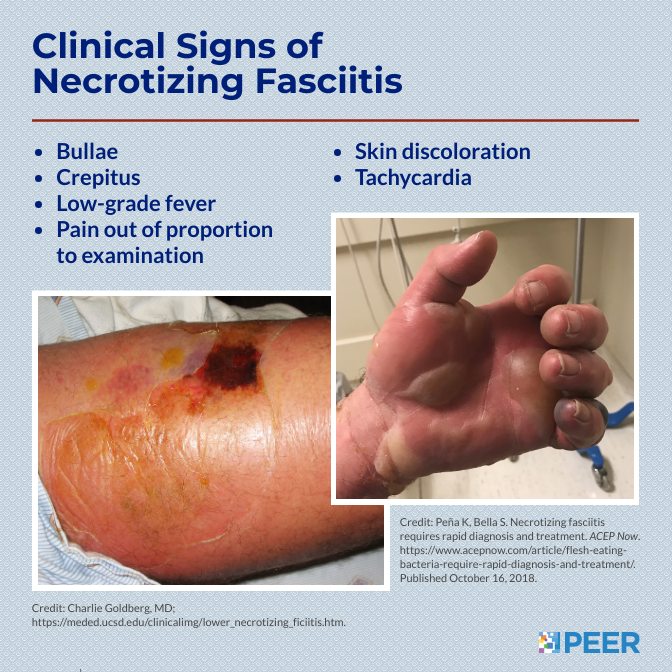 Clinical signs of necrotizing fasciitis. Credit: Infographic: copyright ACEP; bottom-left photo: Charlie Goldberg, MD; top-right photo: Kristen Peña, DO.
Clinical signs of necrotizing fasciitis. Credit: Infographic: copyright ACEP; bottom-left photo: Charlie Goldberg, MD; top-right photo: Kristen Peña, DO.
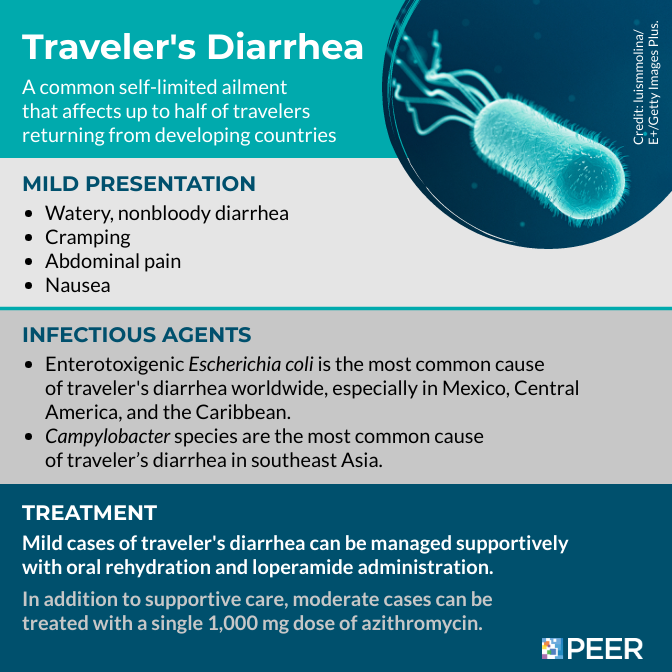 Traveler’s diarrhea. Credit: Infographic: copyright ACEP; photo: luismmolina/E+/Getty Images Plus.
Traveler’s diarrhea. Credit: Infographic: copyright ACEP; photo: luismmolina/E+/Getty Images Plus.
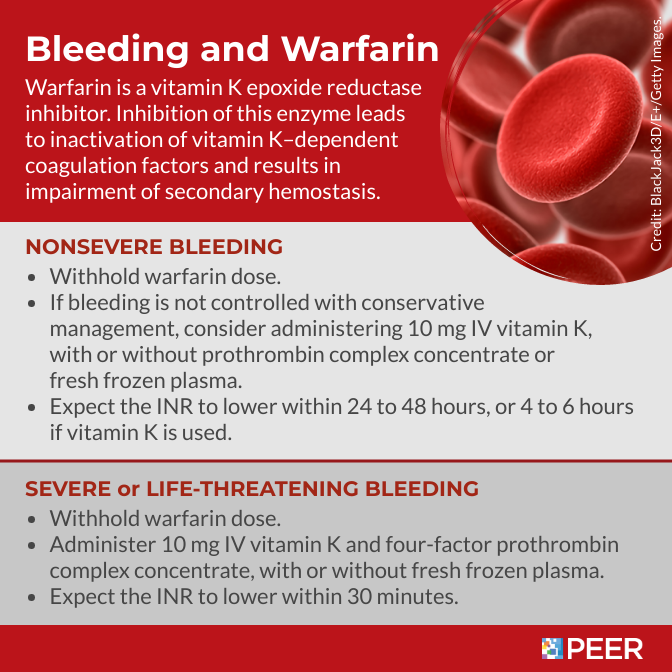 Bleeding and warfarin. Credit: Infographic: Justin Seltzer, MD; photo: BlackJack3D/E+/Getty Images.
Bleeding and warfarin. Credit: Infographic: Justin Seltzer, MD; photo: BlackJack3D/E+/Getty Images.
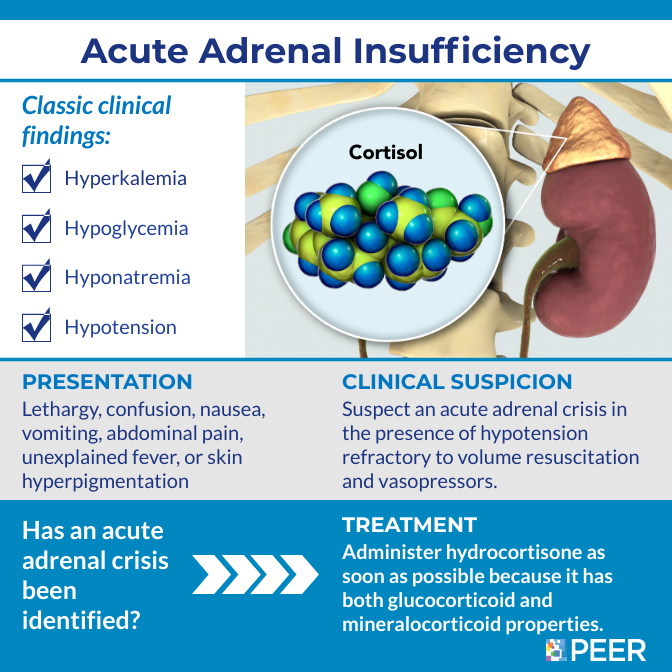 Acute adrenal crisis. Credit: Infographic: copyright ACEP; illustration: Dr_Microbe/iStock/Getty Images Plus.
Acute adrenal crisis. Credit: Infographic: copyright ACEP; illustration: Dr_Microbe/iStock/Getty Images Plus.
High-Quality Questions and High-Yield Feedback to Ensure You're Prepared for Success
- Each question focuses on one physician task, but we provide multiple questions per topic that cover the entire clinical process—from presentation to disposition.
- Our answer choices are all plausible so that each corresponding explanation conveys valuable information.
- Each question is carefully reviewed and edited by multiple practicing emergency physicians to achieve an unparalleled level of quality.
- Our content is weighted by topic according to ABEM's examination blueprint to ensure you're prepared and confident on exam day.
PEER is the best source to prepare emergency physicians at any stage of their career, for any ABEM exam.
NEW! ACEP PEER Mobile App, so You Can Study Anywhere
PEER products are designed to be easy to use anywhere you want to study. As a subscriber, you can download the new ACEP PEER mobile app from the Apple App Store or Google Play Store and study on the go. You can answer questions, access PEER Pearls, zoom into photos and figures to see the details, and launch the online references to learn more on the topics—all from your phone or tablet.
Why Trust PEER?
For over 50 years, PEER has prepared generations of emergency physicians to pass ABEM exams. There's a reason why senior residents and attendings choose PEER when they want to get serious about studying for the boards. Whether you're prepping for the ITE, initial certification exam, MyEMCert exam, or AEMUS exam, PEER is all you need for success.
